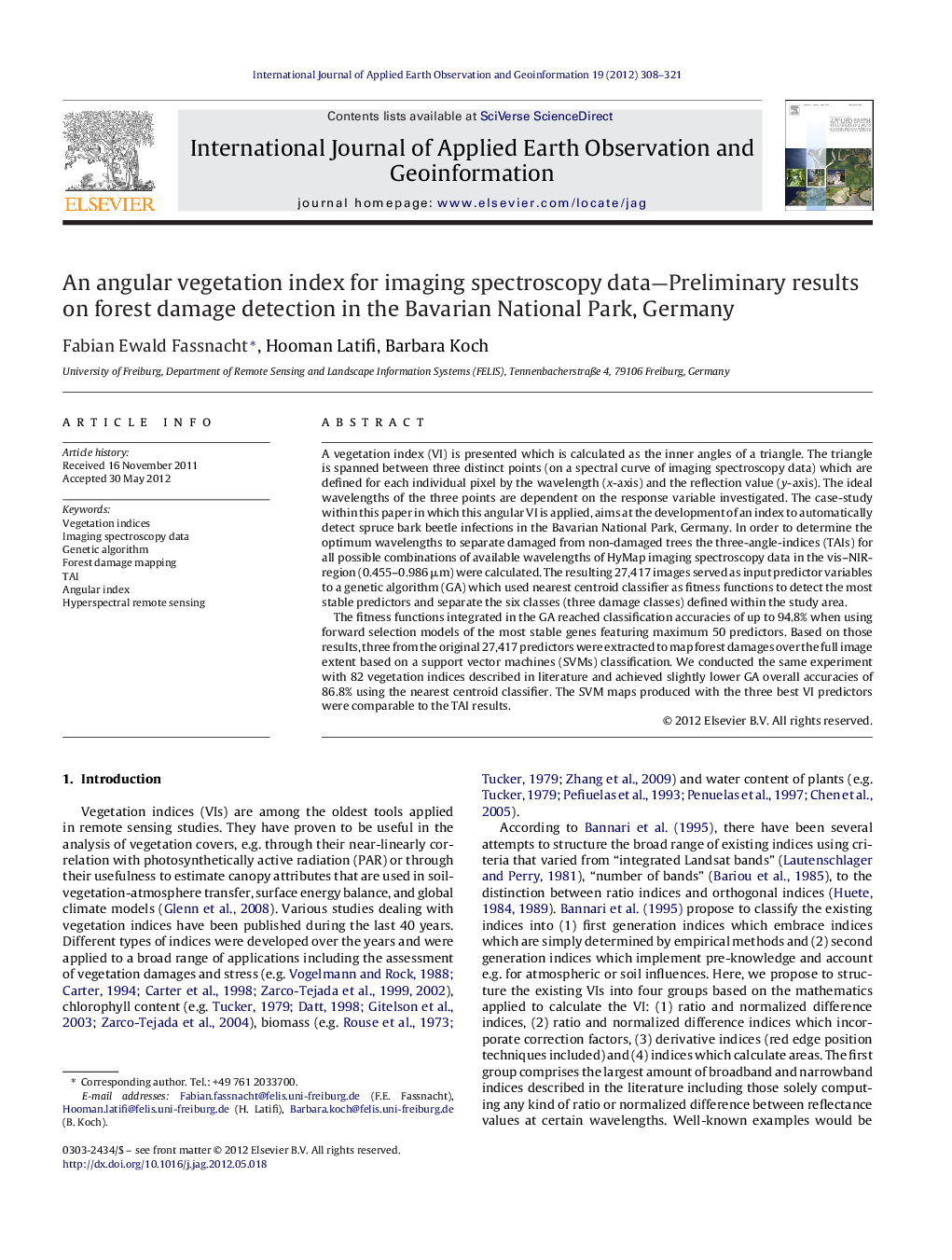| کد مقاله | کد نشریه | سال انتشار | مقاله انگلیسی | نسخه تمام متن |
|---|---|---|---|---|
| 4464994 | 1621841 | 2012 | 14 صفحه PDF | دانلود رایگان |

A vegetation index (VI) is presented which is calculated as the inner angles of a triangle. The triangle is spanned between three distinct points (on a spectral curve of imaging spectroscopy data) which are defined for each individual pixel by the wavelength (x-axis) and the reflection value (y-axis). The ideal wavelengths of the three points are dependent on the response variable investigated. The case-study within this paper in which this angular VI is applied, aims at the development of an index to automatically detect spruce bark beetle infections in the Bavarian National Park, Germany. In order to determine the optimum wavelengths to separate damaged from non-damaged trees the three-angle-indices (TAIs) for all possible combinations of available wavelengths of HyMap imaging spectroscopy data in the vis–NIR-region (0.455–0.986 μm) were calculated. The resulting 27,417 images served as input predictor variables to a genetic algorithm (GA) which used nearest centroid classifier as fitness functions to detect the most stable predictors and separate the six classes (three damage classes) defined within the study area.The fitness functions integrated in the GA reached classification accuracies of up to 94.8% when using forward selection models of the most stable genes featuring maximum 50 predictors. Based on those results, three from the original 27,417 predictors were extracted to map forest damages over the full image extent based on a support vector machines (SVMs) classification. We conducted the same experiment with 82 vegetation indices described in literature and achieved slightly lower GA overall accuracies of 86.8% using the nearest centroid classifier. The SVM maps produced with the three best VI predictors were comparable to the TAI results.
► In this study we propose an angular vegetation index (VI) for hyperspectral data.
► This VI is applied to map forest damages and compared to 82 known VIs.
► We used a genetic algorithm to select best wavelengths for forest damage detection.
► Using ≤50 predictors 6 classes (276 samples) were separated with up to 94.8% acc.
► A final wall-to-wall SVM classification partly affirmed these results.
Journal: International Journal of Applied Earth Observation and Geoinformation - Volume 19, October 2012, Pages 308–321